

CarExpert.com.au
The CarExpert team's favourite cars of 2025
3 Days Ago
The Tesla Model 3 has been the best electric car on sale in Australia since its launch. This update gives it some breathing room atop the pile.
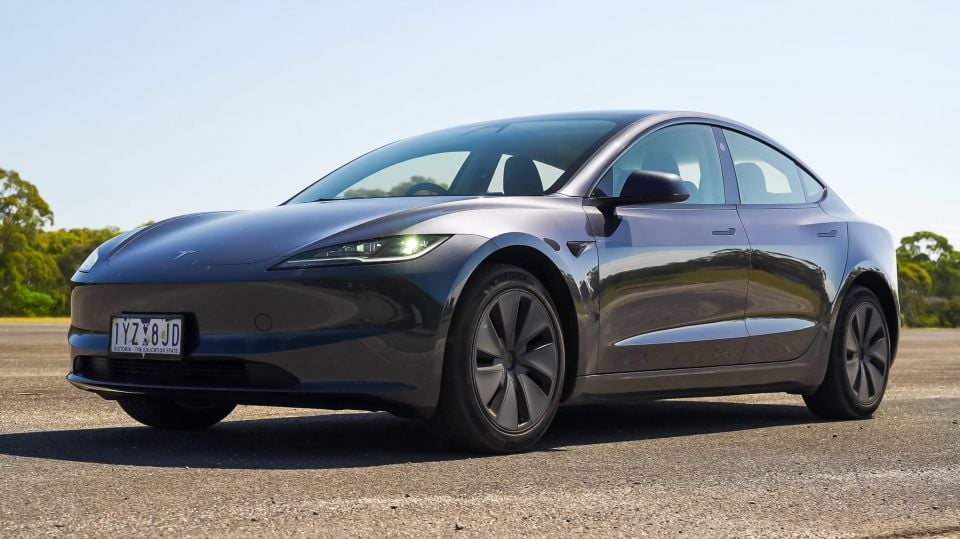
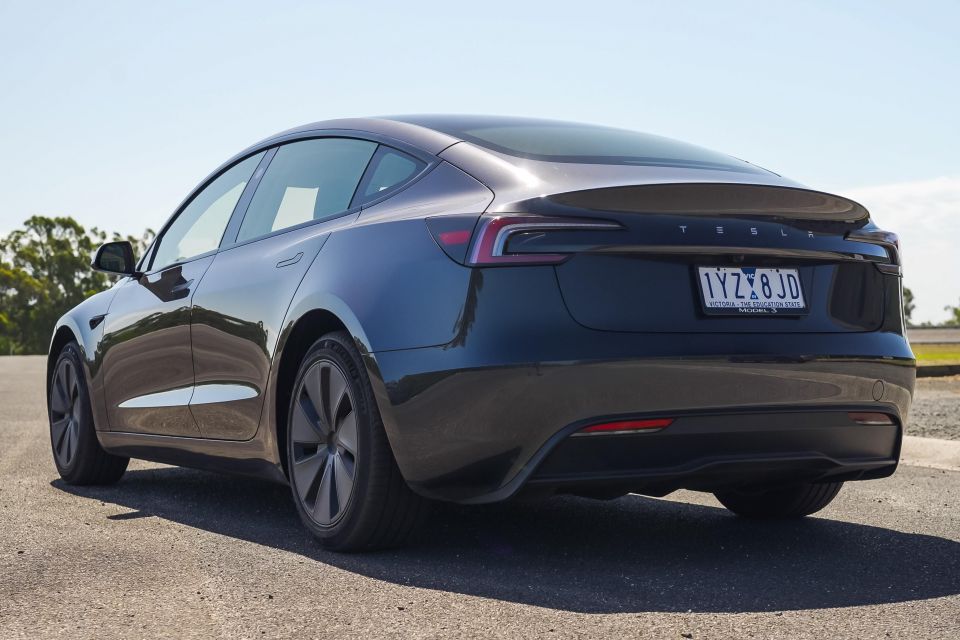

Quickly see how this car stacks up against its competition. Select any benchmark to see more details.
Where expert car reviews meet expert car buying – CarExpert gives you trusted advice, personalised service and real savings on your next new car.
Life is tough at the top.

Note: Here is our most recent review of the Tesla Model 3.We have also updated key details such as pricing and specifications with the most up to date information available.
Even six years on from its global debut, surrounded by a raft of newer rivals designed specifically to knock it off its perch, the Tesla Model 3 sets the standard for (reasonably) affordable electric cars.
Its biggest competition on the sales charts has come from its SUV stablemate, the Model Y – although a raft of new rivals from China are finally making inroads.
How do you update the best? Tesla has focused on whittling away at the car’s rough edges to deliver a more refined all-rounder.
It says the new Model 3 is quieter inside, more comfortable on rough roads, and possesses a more luxurious interior thanks to a few subtle tweaks. It also packs a longer range… and a set of funky new indicator buttons on the steering wheel.
Things haven’t gone to plan for Tesla with the new Model 3 so far. It was taken off sale locally due to an issue with a rear top-tether point for child seats, although deliveries are now back up and running.
How successful has the rest of the update been?
Thanks to Carma Carhire for the loan of the Model 3
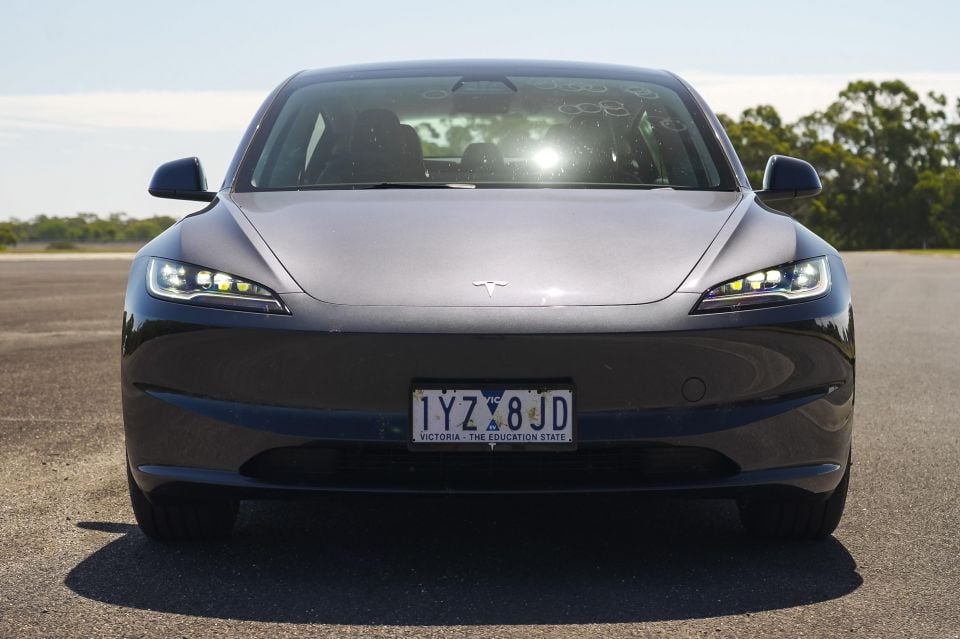
| Model | Price before on-road costs |
|---|---|
| Tesla Model 3 RWD | $54,900 |
| Tesla Model 3 Long Range AWD | $64,900 |
| Tesla Model 3 Performance AWD | $80,900 |
To see how the Tesla Model 3 lines up against the competition, check out our comparison tool.
Buy your new car without the stress. It's fast, simple and completely free.

Great service from Travis and team, second time I have used this business would not hesitate to recommend them to anyone
Craig C.
Purchased a Ford Ranger in Sunshine Coast, QLD
CarExpert helped Craig save thousands on his Ford Ranger, now let us save you on your next new car.
Find a dealThe changes to the Model 3 inside are subtle, but they do make a difference.
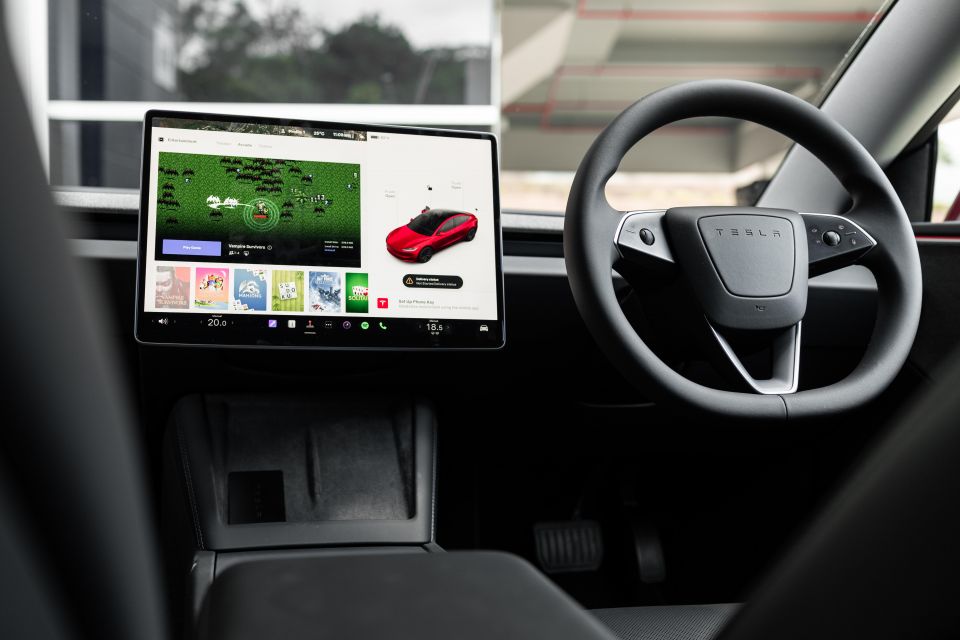
As before, it’s an aggressively minimalist space. There’s no driver cluster, no conventional buttons and, for 2024, no stalks behind the steering wheel. The indicators are buttons on the steering wheel, and the drive selector is now a slider on the right-hand side of the touchscreen.
Sounds weird, and it is weird at first. The indicators quickly become second nature, just as they do on a Ferrari, Lamborghini, or any motorbike – but the drive selector is counter intuitive, even after a few days. Even a set of touch buttons on the screen would have been preferable.
While we’re talking changes, the new mottled grey dash and door trims look and feel warmer than the white or wooden options previously available, and the ambient lighting wrapping around the base of the dashboard is a nice touch.
With a short dash, ultra-low bonnet, and lack of instruments in front of you, the view out the windscreen is unlike anything else on the road. Throw in the glass roof, and you’ve got a cabin that’s uniquely light and airy.
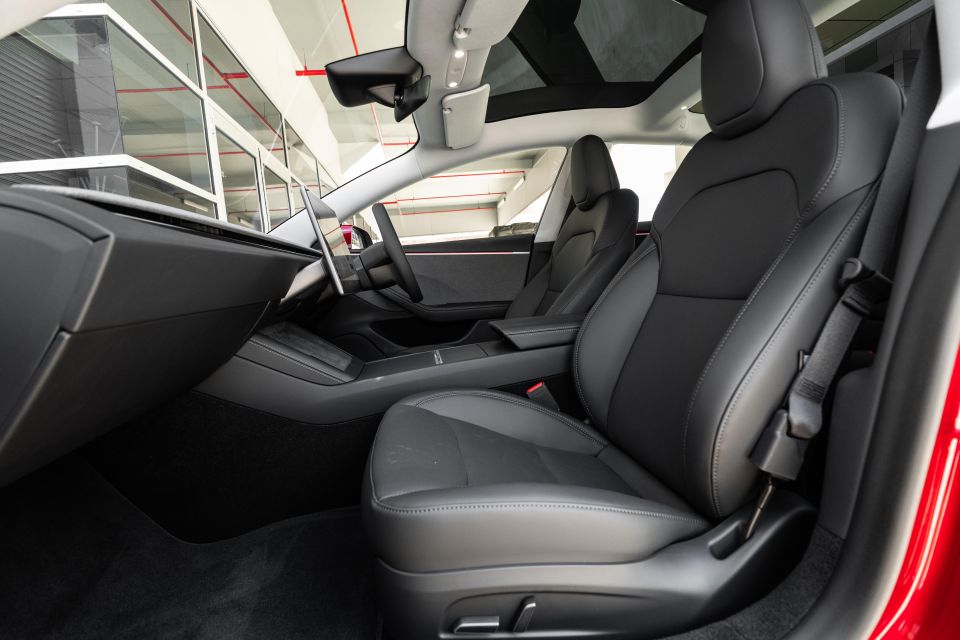
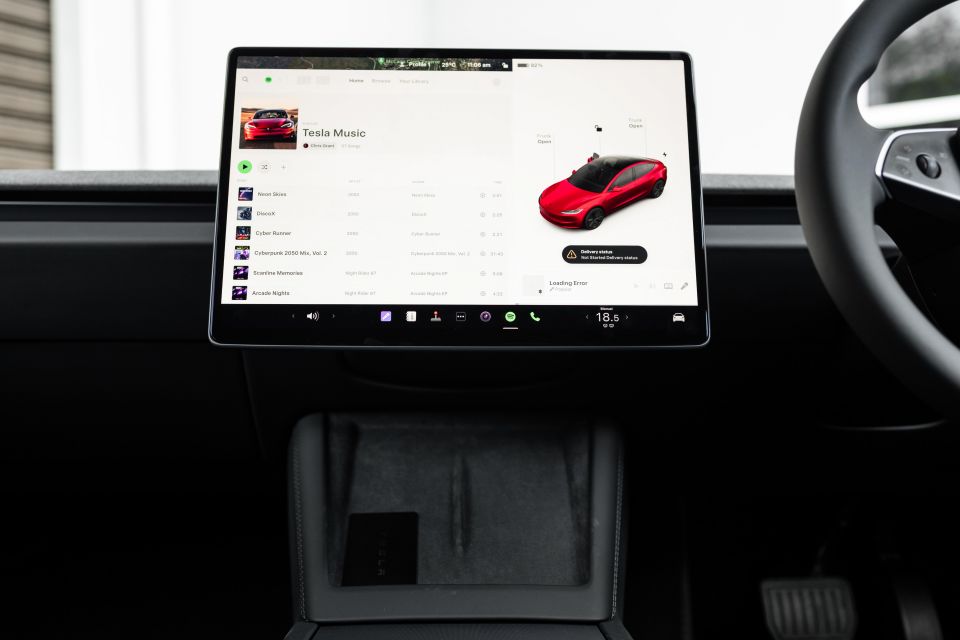
Everything in the Model 3 is managed through that massive central touchscreen, including the mirrors, steering wheel, and windscreen wiper speed. With no head-up display, the only speed display is in the top right-hand side of the screen.
It takes some getting used to, but the speed readout itself is big enough to pick up easily at a glance. A head-up display was high on our wish list for this update; it’s a shame Tesla hasn’t delivered one.
Otherwise the screen, which has thinner bezels than before, remains one of the slickest in the business. It boots up fast, the graphics are clean and modern, and everything you use frequently can be put within easy reach.
With no Apple CarPlay, you’re reliant on the strong suite of apps (Spotify, for example, is baked in) for connectivity on the move. Tesla’s voice control isn’t a patch on Siri, and I’d prefer to have my messages managed through the default Apple app… but the lack of smartphone mirroring isn’t a dealbreaker here like it may be elsewhere.
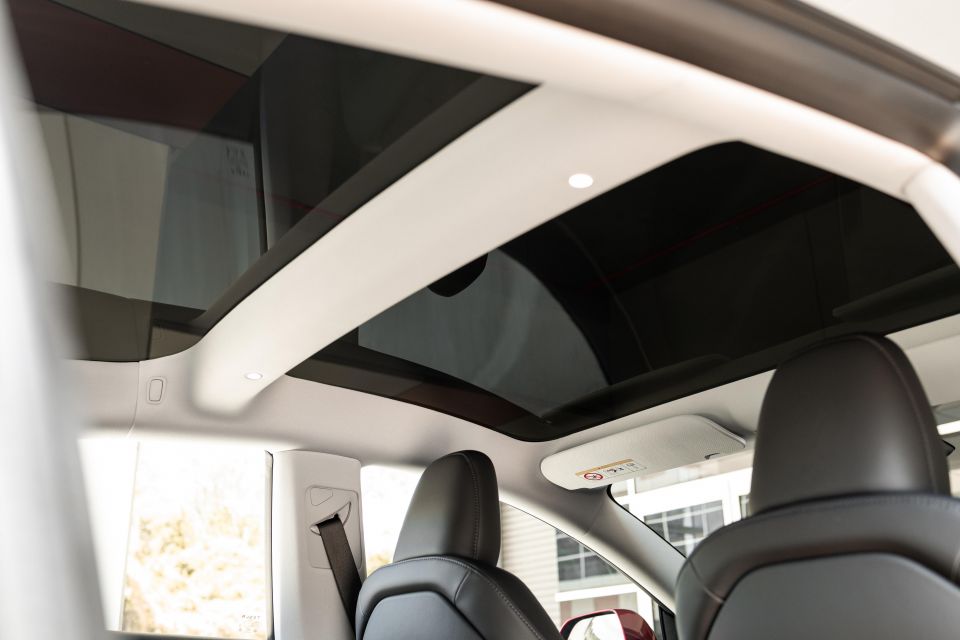
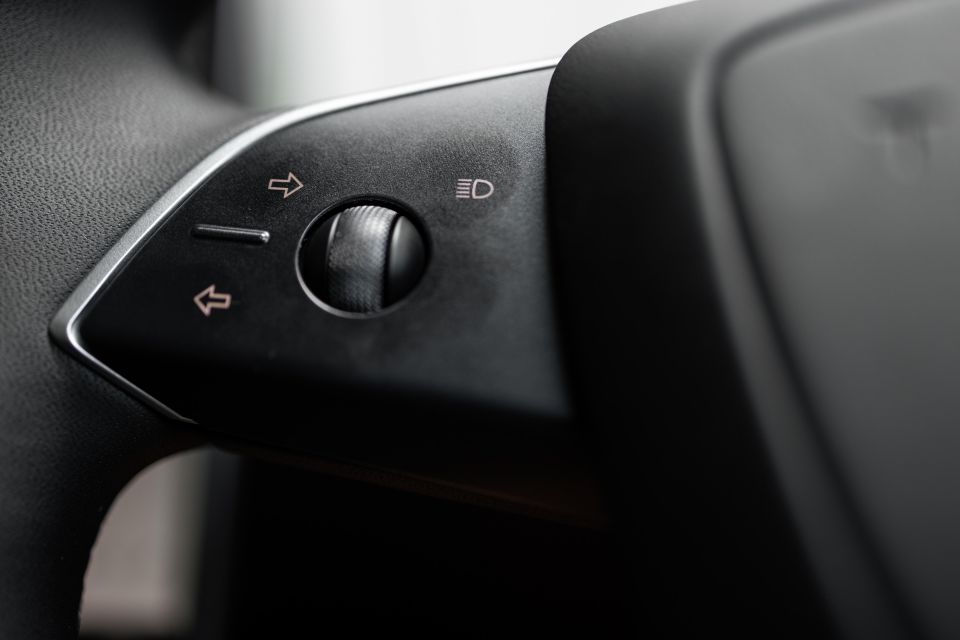
The switch to what Tesla calls camera-based parking is hard to understand. In the old Model 3, inching up to an obstacle at parking speeds brought up a clever display with a precise warning as to how close you’re getting.
In the new one, you get a muddy outline of your surroundings with what feels more like a prediction about how far you are away. It’s a step backwards.
As before, there’s more to this car than technology. The seats are supremely comfortable up front, allowing bodies of all shapes and sizes to get comfortable, and the addition of excellent ventilated seats to the toasty bum warmers is a win during the Australian summer.
Once the air vents are set up right they blow at you from angles unimaginable in other cars, too.
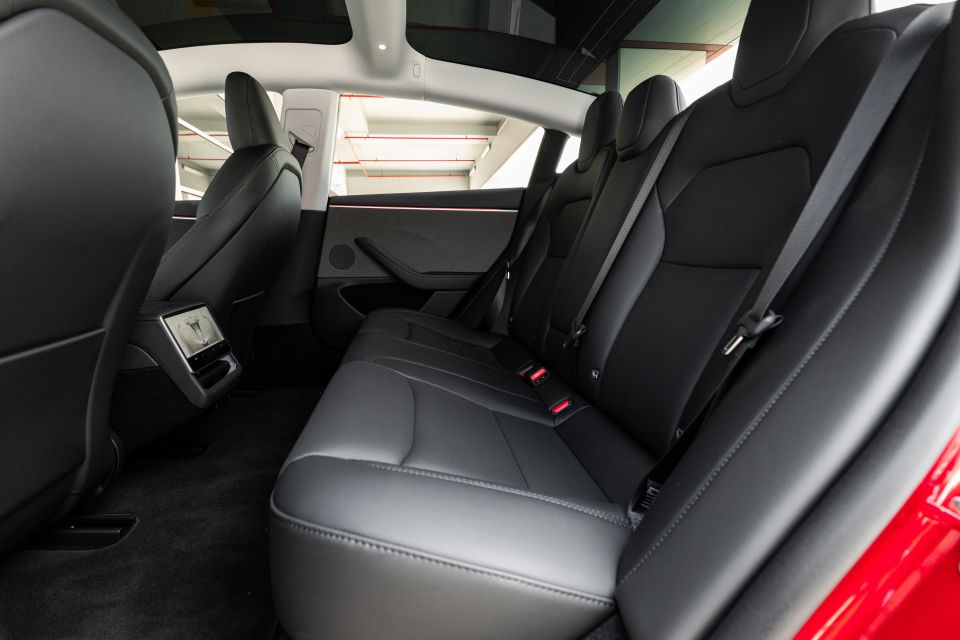
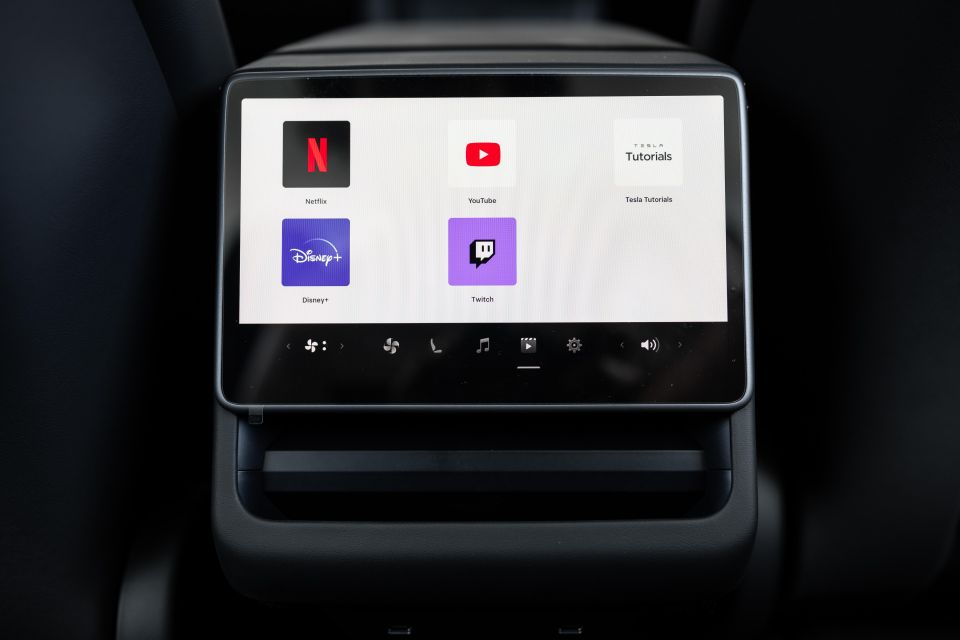
Nothing in our tester squeaked or rattled, and it wasn’t a press fleet prima donna. With new Model 3 deliveries on hold at the time, we had to use a rental agency to get behind the wheel.
Rear seat space remains slightly worse what you’d expect from a 3 Series or C-Class. Legroom is average at best, and the bench is set low so longer-legged passengers end up with their knees around their chin. Headroom isn’t great.
ISOFIX points feature on the outboard rear seats, and thanks to a recent update there’s now proper access to all three rear-seat top-tether anchor points.
There’s a fold-down armrest with cupholders between the seats, air vents, and USB-C charge ports on offer back there. There’s also a new screen capable of playing Netflix or YouTube content.
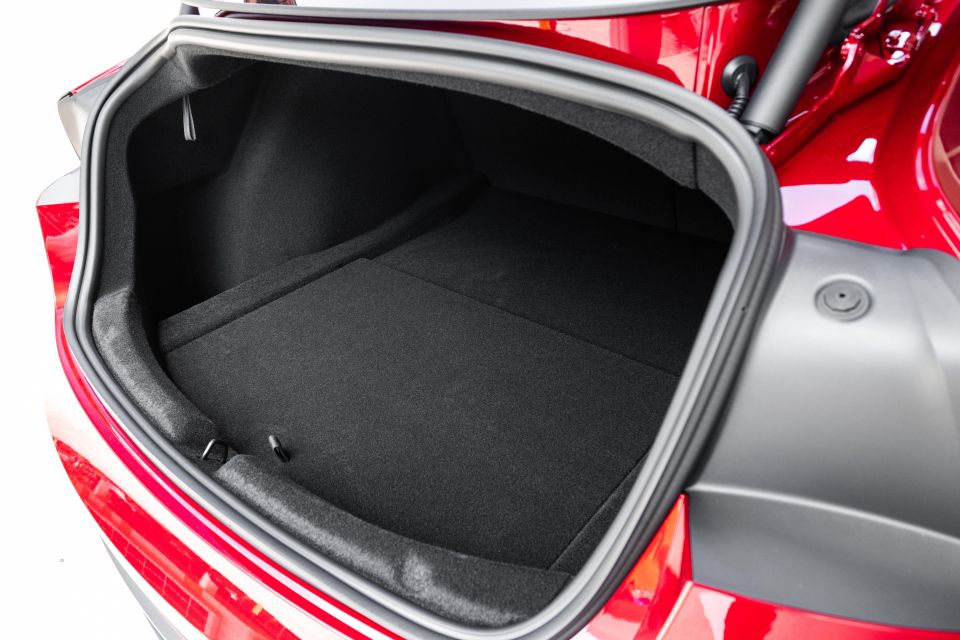
It’s a neat addition, but we’d wager kids will use their iPads on long trips instead of a small display that plays audio through the vehicle speakers.
Claimed boot space is 594 litres including a deep cubby beneath the floor, and an 88-litre front boot (or ‘frunk’ in Tesla parlance) up front.

| Model | Tesla Model 3 RWD |
|---|---|
| Drivetrain | Single-motor electric |
| Battery | 57.8kWh lithium iron phosphate (per EVDatabase) |
| Power | 208kW (per ADR filings) |
| Torque | Not supplied |
| Driven Wheels | Rear-wheel drive |
| Weight | 1765kg (tare) |
| Energy efficiency (as tested) | 12.8kWh/100km (mixed driving) |
| Claimed range | 513km |
| Max DC charge rate | 170kW |
To see how the Tesla Model 3 lines up against the competition, check out our comparison tool.
The last Model 3 was a fun car to drive in the city, but it was also a bit busy.
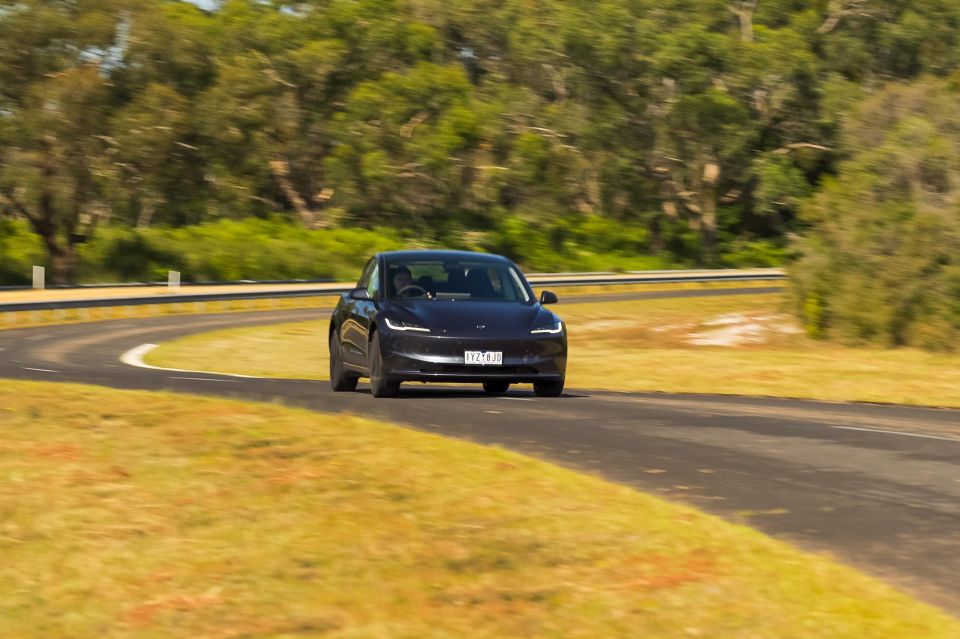
The new one is more grown up. For starters, it does a better job smoothing out rough city roads.
Where the old car felt sporty and sharp over small bumps and potholes, the 2024 update does a better job smoothing over them and isolating occupants. It’s a more relaxed car than before, and is more closely aligned with how you’d expect a Mercedes-Benz C-Class or BMW 3 Series to feel.
It’s not a wannabe German executive express though. With direct steering that rarely requires you remove your hands from the wheel and instant response from the electric motors, it’s a fun car to point and shoot around the city.
The addition of a blind-spot warning light in the speaker grilles on the B-pillars is a win in town, while the resolution on the blind-spot cameras is much better than was previously the case.
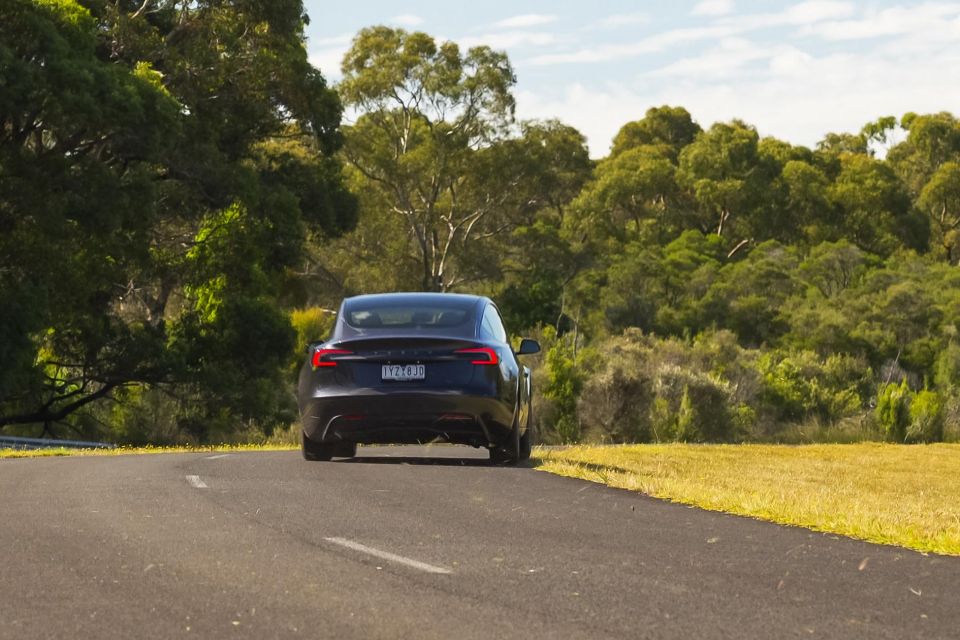
Even though this is the ‘slow’ Model 3, with rear-wheel drive and modest outputs alongside the Long Range, you’ll win most traffic light drag races if you’re that way inclined. There’s no need to worry about Launch Control, or being in the right drive mode here. You just plant the accelerator and it goes.
Tesla tuning is the best in the game, with a throttle tune that makes it easy to get exactly the right amount of performance when you put your foot down, and regenerative braking that makes one-pedal driving a breeze.
You rarely need to touch the brake pedal, and there’s none of the lurching awkwardness you get in some rivals in stop/start traffic. Tesla has been doing this a long time, and it shows.
The changes made to the suspension, tyres, and soundproofing really show at higher speeds.
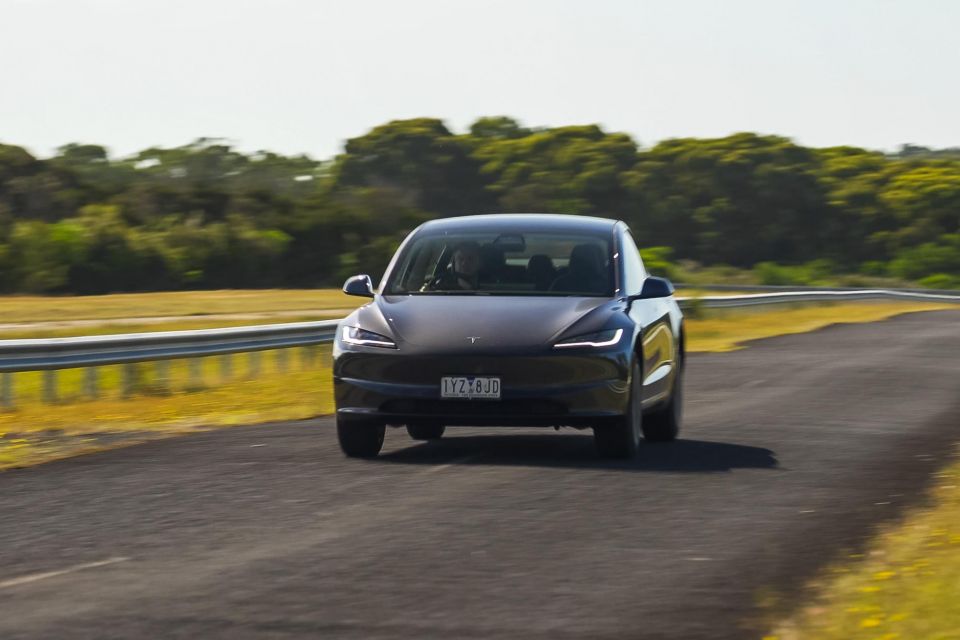
In the last Model 3, you needed to crank up the radio volume a few notches to drown out the roar from coarse chip Australian highways. It’s not a Rolls-Royce, but it’s noticeably quieter than before at 100km/h, while the updated suspension makes it a more relaxing place to spend time.
In the process of filming the Model 3, we did discover that it’s a bit lacking if you’re a really keen driver. That’s not down to any fundamental flaws, and is rather a product of the low rolling resistance tyres fitted as standard.
They’re perfect for squeezing every drop of range from the lithium iron phosphate battery pack, but aren’t designed for drivers who are keen to squeeze every tenth out of their weekend runs through the hills. Will most owners care? Probably not.
They will care about the Autopilot highway driving assistant system.

Pressing the button on the right-hand spoke of the steering wheel once activates adaptive cruise control, which maintains a gap to the car in front. Pressing it twice turns on active lane centring, which will take control of the steering to follow the white lines on the road.
As we’ve said before, the Autopilot name is misleading. For one, you need your hands on the wheel at all times… and there’s nothing in the base Model 3 that other cars won’t do in 2024.
The adaptive cruise control system is smooth and smart, although it still is prone to braking for vehicles in adjacent lanes, and the lane-centring system is comparable to what’s on offer in the latest Kia and Hyundai range.
Ticking the $5500 box for Enhanced Autopilot adds auto lane changes and the ability for the car to exit the freeway with the system active – the former is possible in Mercedes-Benz vehicles among others, the latter is a Tesla special.
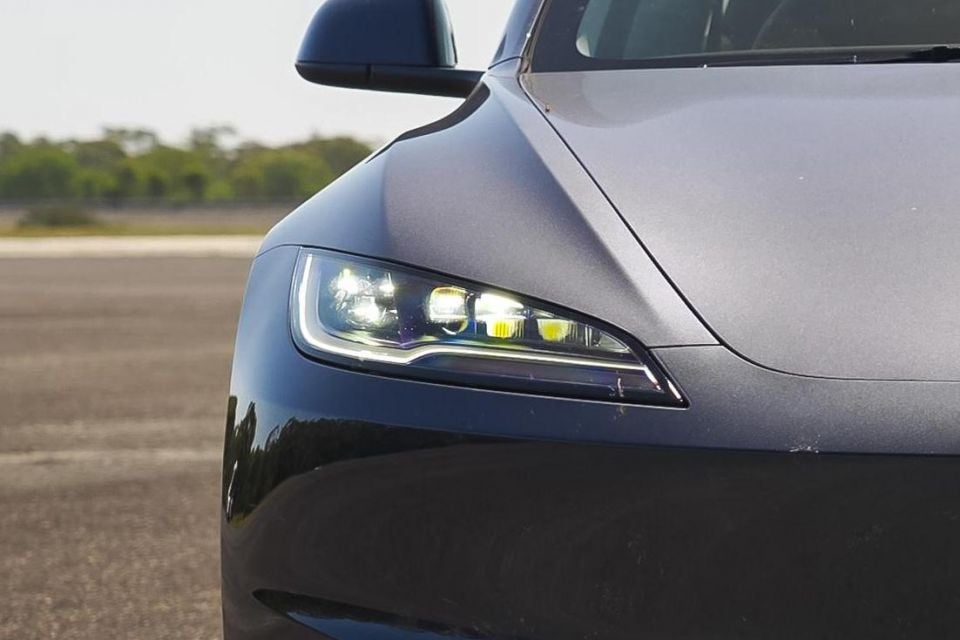

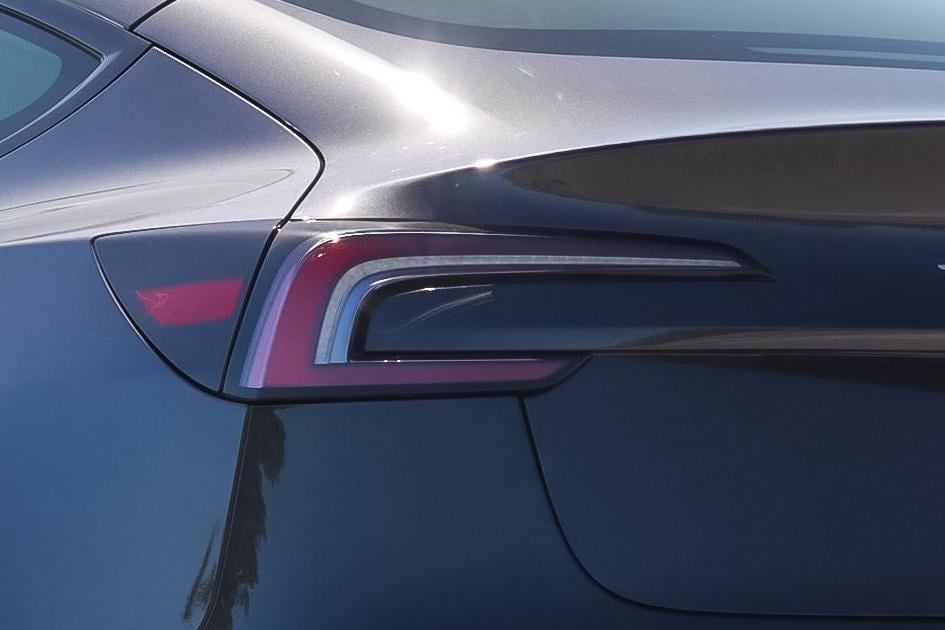

Where expert car reviews meet expert car buying – CarExpert gives you trusted advice, personalised service and real savings on your next new car.
Model 3 RWD highlights:
Model 3 Long Range adds:
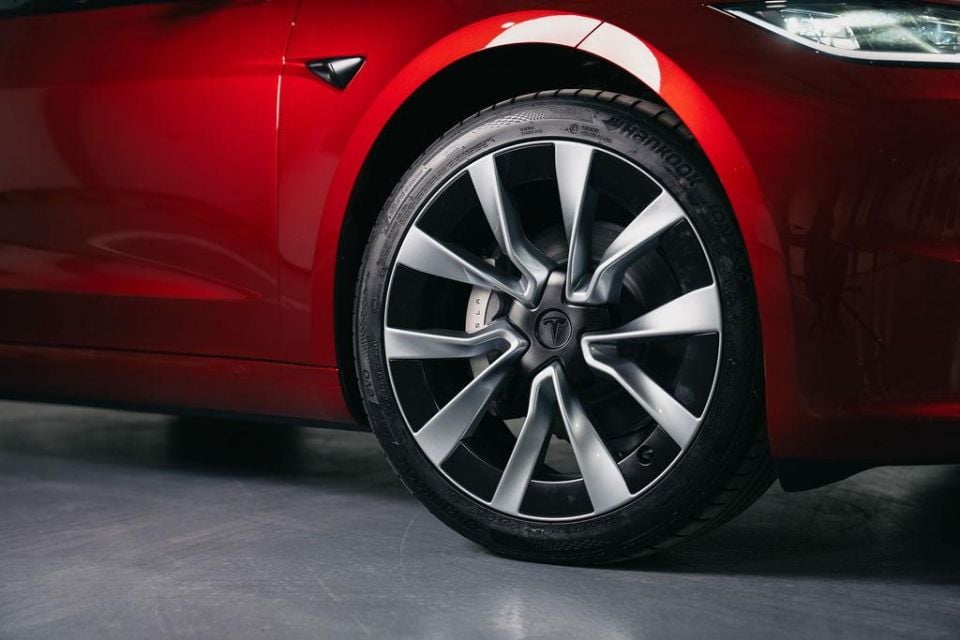
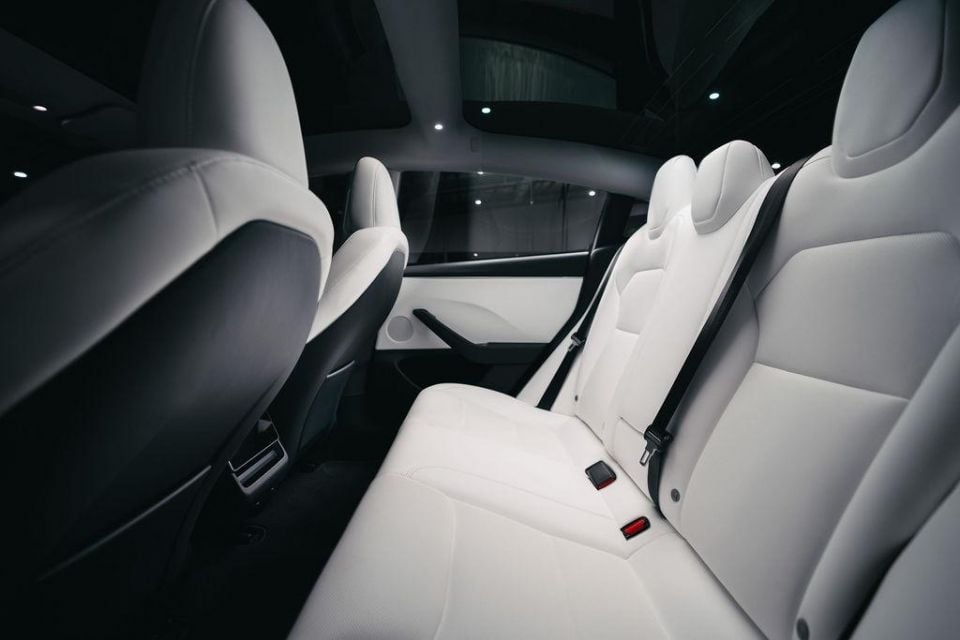
The following features are optional on both variants:
A Premium Connectivity subscription is complimentary for 30 days, and adds:
The latest Model 3 doesn’t have an ANCAP safety rating, tied into the lack of an easily accessible central top tether point for a child seat – and is therefore not compliant with Australian Design Rules.
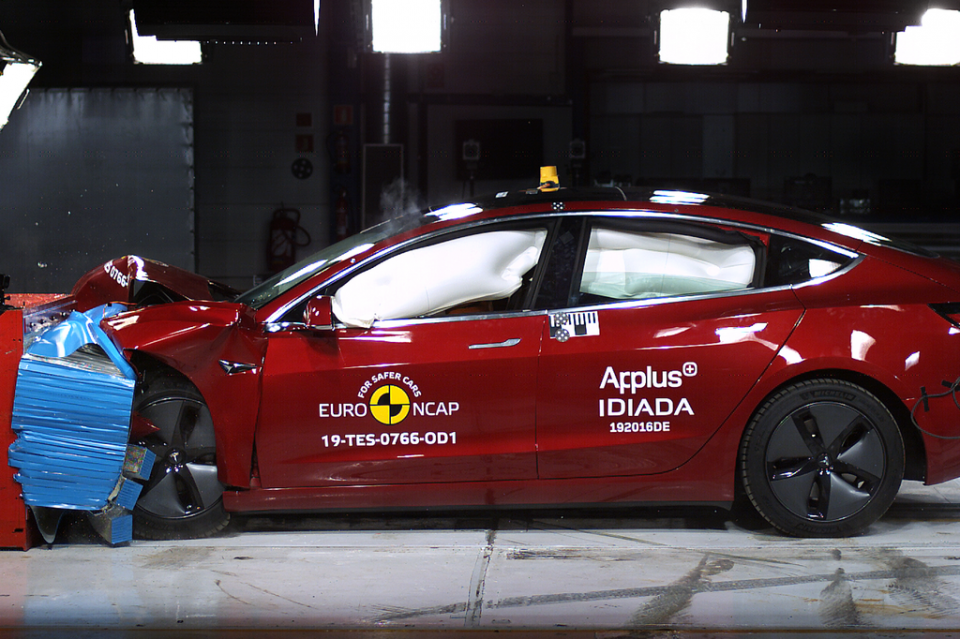
The pre-update model had a five-star rating. It scored 96 per cent for adult occupant protection, 87 per cent for child occupant protection, 74 per cent for vulnerable road user protection, and 94 per cent for safety assist.
Standard safety equipment includes:
Tesla backs the Model 3 with a four-year, 80,000km warranty, with a separate eight-year, 160,000km warranty for the battery and drive unit (eight years or 192,000km for the Long Range).
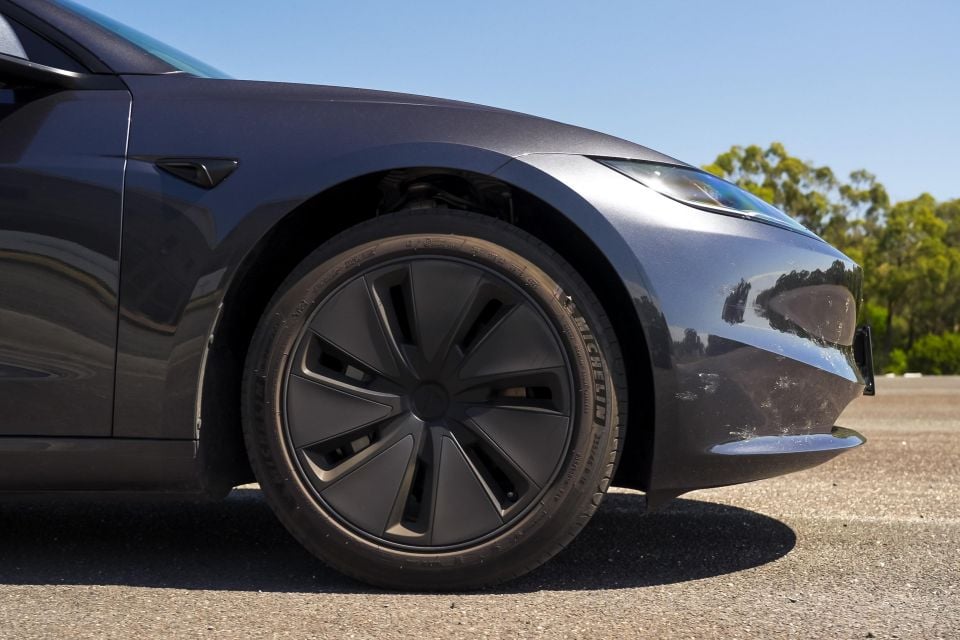
Given it has very few moving parts, there isn’t much maintenance required on the Model 3. Tesla recommends having the air-conditioning filters changed every two years, and checking the tyre tread, balance, and rotation every 20,000km.
Thanks to regenerative braking, the brake pads and discs require work less frequently than in internal-combustion vehicles. However the Model 3 will need to have brake fluid checked every two years, and the pads and discs lubricated every 12 months in colder climates.
The Model 3 is still a class leader, although the gap has closed since its debut.
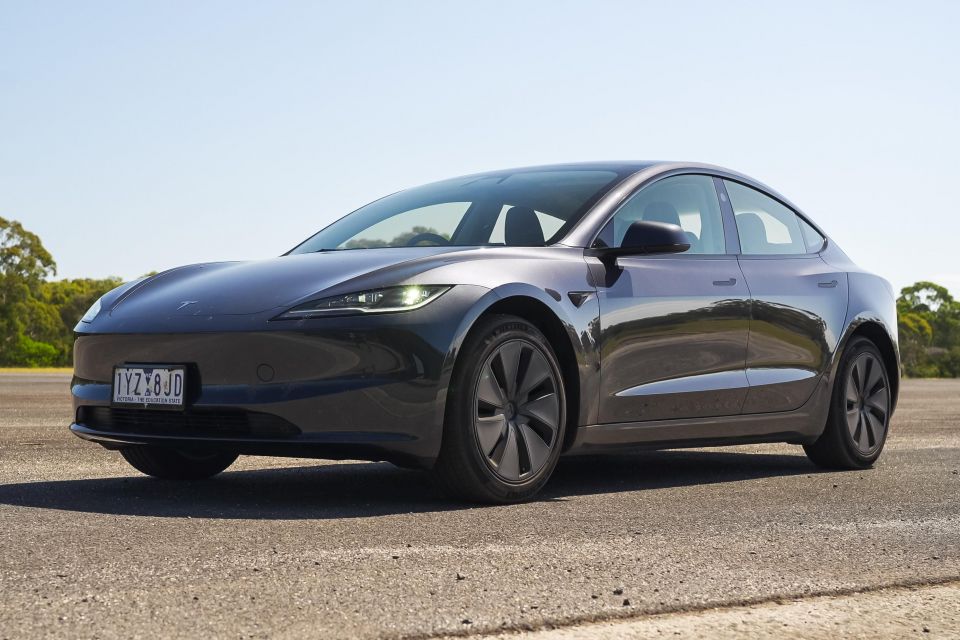
The improvements Tesla has made to the suspension have delivered a smoother ride, and the updated Model 3 is meaningfully quieter than the car it replaces.
It remains fearsomely efficient, especially alongside rivals from internal combustion carmakers in the process of shifting to electric power.
The refreshed cabin doesn’t feel all that different – which isn’t a bad thing, once you’re dialled into its aggressively minimalist layout. The new materials haven’t fundamentally changed the cabin relative to the old car, but the ventilated seats are a welcome addition… and those indicators are easy enough to use once you’re dialled in.
More competition is coming for the Model 3, and its leadership in the electric car world isn’t guaranteed. This update gives it some extra breathing room at the top of the pile though.

Click the images for the full gallery
Interested in buying a Tesla Model 3? Get in touch with one of CarExpert’s trusted dealers here.
MORE: Everything Tesla Model 3
Where expert car reviews meet expert car buying – CarExpert gives you trusted advice, personalised service and real savings on your next new car.
Scott Collie is an automotive journalist based in Melbourne, Australia. Scott studied journalism at RMIT University and, after a lifelong obsession with everything automotive, started covering the car industry shortly afterwards. He has a passion for travel, and is an avid Melbourne Demons supporter.


CarExpert.com.au
3 Days Ago


Josh Nevett
4 Days Ago


Damion Smy
4 Days Ago


Ben Zachariah
5 Days Ago


Derek Fung
6 Days Ago


Damion Smy
8 Days Ago